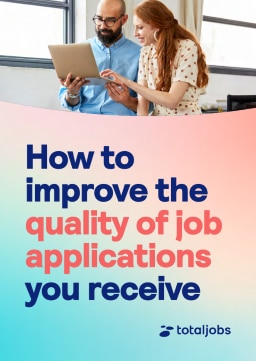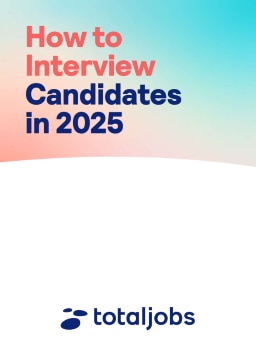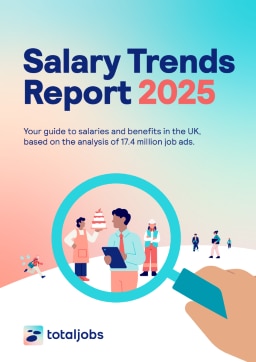
KPIs in recruiting: 11 tips for enhanced efficiency and an improved candidate experience
Table of Contents
- KPIs in recruitment
- Attraction and application
- Selection and onboarding
- Post-placement
- Turning data into action:

How to Improve Job Application Quality
Recruiting isn’t just about filling vacancies. It’s about building a strategic, data-driven process that attracts top talent and delivers measurable results. Key Performance Indicators (KPIs) are the foundation of this approach, helping organisations assess their recruitment strategies, identify bottlenecks, and continuously improve.
In this guide, we’ll explore 11 essential recruitment KPIs aligned with each stage of the candidate journey.

Unlock our guide to better quality applications
KPIs in recruitment and why they matter
Key Performance Indicators (KPIs) in recruiting are data-led metrics that help employers and hiring teams evaluate the effectiveness of every stage in the hiring process. From application rates to time-to-hire, these metrics provide an objective lens on what’s working and what needs attention.
In a landscape where speed, accuracy, and candidate experience are all critical, KPIs act as essential tools for ensuring transparent, agile, and scalable recruitment.
Despite frequent conversations around talent shortages, stakeholders outside of HR often underestimate the challenges recruiters face. A vacancy might sit open for weeks, frustrating hiring managers despite teams working tirelessly behind the scenes.
That’s where KPIs help. They offer a concrete way to:
- Showcase performance and value
- Pinpoint inefficiencies
- Justify investment in tools or process improvements
They also help shift conversations from gut feeling to fact, supporting better decisions, and fostering trust with business leaders.
KPIs for the attraction, information, and application phases
The start of the recruitment journey shapes a candidate’s first impression and determines the quality of applicants you attract.
This phase is all about reach, clarity of messaging, and frictionless entry into the pipeline. The right KPIs help identify whether you’re targeting the right audience and whether your funnel is built to move the right candidates forward efficiently.
1. Rejection rate
Rejection rate refers to the proportion of candidates who are rejected at the preliminary stages of the hiring process due to not meeting the job criteria.
A high rejection rate may indicate:
- Vague or overly ambitious job descriptions
- Poor targeting in job advertising
- Misaligned expectations in messaging
Monitoring this metric allows you to refine job ads, clarify role requirements, and improve sourcing strategies. This can result in a higher-quality applicant pool and save valuable screening time.
2. Interview ratio
The interview ratio measures the number of applications received versus the number of candidates who are selected for interview.
A large disparity, where many apply but few are shortlisted, suggests a misalignment between the role’s requirements and the audience your job ad is reaching. Alternatively, if too many applicants are being moved forward, it may indicate a lack of proper screening mechanisms, which can slow down the recruitment process later on.
A balanced interview ratio reflects a well-targeted hiring campaign, with clear job criteria and an efficient screening process.
By regularly reviewing this KPI, recruiters can recalibrate job ads, platforms used for posting, or even applicant filtering methods.
3. Feedback time
Feedback time tracks how quickly your recruitment team communicates with candidates after each step in the hiring process.
Timely feedback is essential for maintaining a positive candidate experience and building trust in your employer brand. Delays in communication, especially post-interview, can lead to:
- Candidate drop-off
- Poor experience and negative brand perception
- Lost opportunities to fast-moving competitors

Top tip: Shortening this time signals a well-organised process that respects the candidate’s effort and time. Solutions might include automation, tighter SLAs, or clearer internal workflows.
4. Time to interview
Time to interview reflects the time between receiving a candidate’s application and scheduling their first interview.
This KPI is particularly important in fast-moving industries or competitive talent markets where delays can result in losing out on strong candidates. A long time to interview might indicate:
- Bottlenecks in CV screening
- Coordination challenges with hiring managers
- A backlog in the recruitment pipeline
On the other hand, a short and efficient time to interview suggests a streamlined, responsive hiring function. Tracking this KPI helps teams identify and remove delays in the early process, often leading to better candidate engagement and higher interview attendance rates.
KPIs for the selection and onboarding phases
Once candidates progress beyond the application stage, it’s all about selection, alignment, and keeping them engaged through to onboarding.
These KPIs help evaluate the quality of decision-making, process efficiency, and how candidates perceive their journey.
5. Offer acceptance rate
Offer acceptance rate shows the proportion of job offers that are accepted by candidates.
A low rate is a clear sign that something is off in either the role itself, the way it’s presented, or the overall experience leading up to the offer. For example, with 72% of workers citing salary as the most important factor when choosing a job, compensation misalignment can often lead to rejections. Other common causes include:
- Poor candidate engagement
- Unrealistic expectations set during interviews
Regularly reviewing this KPI can help to spot patterns and make strategic adjustments to:
- Salary benchmarking
- Offer presentation
- Interview experience
High offer acceptance rates indicate that your hiring process is not only efficient but also persuasive and well-aligned with candidate expectations.
6. Time to hire
Time to hire tracks the number of days it takes from the moment a candidate enters your pipeline (through an application or sourcing) to the point they accept an offer.
It’s a core KPI for recruitment process performance because it reflects the overall speed and responsiveness of your hiring strategy. Delays at any stage, from application review to final decision, can drag this number up and increase the risk of candidate drop-off.
Measuring time to hire can reveal which steps in the process are slowing you down, whether it’s a bottleneck in scheduling interviews or delays in internal approvals.
Optimising this metric can help:
- Reduce time spent on each hire
- Boost efficiency
- Increase your chances of securing top talent before your competitors
7. Time to fill
Time to fill spans the full recruitment lifecycle, from requisition approval to a new hire’s start date, covering:
- Sourcing
- Interviews
- Offer negotiation
- Notice periods
- Onboarding
Remember, long times to fill aren’t always bad. Some open positions take longer by nature. But consistently high figures may indicate internal delays or under-resourcing.
Tracking this KPI supports better workforce planning and helps set realistic timelines for hiring managers.
8. Cost of vacancy
Cost of vacancy refers to the financial impact of leaving a position unfilled.
Every day that a key role remains vacant can affect revenue, productivity, or team morale, especially in roles that generate income or manage critical functions. By attaching a real monetary value to vacancies, you can more effectively prioritise hiring efforts and secure necessary resources to speed up the process.
Understanding this cost also helps reinforce the strategic importance of recruitment within the business. When hiring delays are seen through the lens of lost revenue rather than just empty desks, it becomes easier to gain buy-in for process improvements or technology investments.
9. Candidate satisfaction
Candidate satisfaction measures how applicants perceive the recruitment experience, from initial contact through to offer or rejection.
A consistently high level of satisfaction reflects well on your employer brand and can increase the likelihood of referrals or reapplications. On the other hand, low satisfaction scores often correlate with:
- Poor communication
- Unclear processes
- Lengthy delays
Candidate satisfaction surveys are a valuable way to gather feedback and continuously improve the experience. They can uncover hidden frustrations that might not be obvious from internal data alone.
Tracking this KPI regularly ensures that your hiring process remains candidate-friendly and competitive.
KPIs for the post-placement phase
Recruitment doesn’t stop when the offer is signed. What happens next reveals whether the hiring process actually led to the right outcome.
These KPIs help you understand the long-term impact of your recruitment efforts and highlight where better alignment or onboarding could make a difference.
10. Retention rate
Retention rate shows how many of your new hires stay with the organisation beyond a specific period, something many employers are currently grappling with, as 1 in 3 workers consider looking for a new role.
A high turnover of new employees can indicate issues not just with onboarding, but with the hiring process itself. For example, expectations set during interviews didn’t match the reality of the job.
Retention is one of the most important long-term KPIs for recruitment because it speaks directly to the quality and suitability of hires. Measuring this over time allows you to connect hiring outcomes with employee engagement and overall business performance.
If early attrition is high, it may be time to revisit and rethink elements like:
- Job descriptions
- Interview questions
- Onboarding support
11. Quality of hire
Quality of hire is often seen as the ultimate KPI for recruitment process effectiveness, tracking how well new employees perform and integrate into the team over time.
Unlike speed- or cost-based metrics, quality of hire focuses on outcomes, namely: are you bringing in people who add real value to the business? Measuring this can be complex, often involving a blend:
- Manager feedback
- Performance data
- Cultural fit
- Employee retention
But it’s well worth the effort. When done right, this KPI helps you fine-tune everything from sourcing strategies to interview techniques, ensuring that recruitment is not just fast and efficient but also impactful.
Turning data into action: The value of recruitment KPIs
Recruitment KPIs do more than just measure performance. They help to unlock the insights needed to build a faster, smarter, and more candidate-focused hiring process. By identifying what’s working and where things are falling short, these metrics empower organisations to continuously refine their recruiting efforts, streamline workflows, and enhance the overall experience for candidates.
As competition for skilled talent intensifies, the ability to track and act on these metrics is critical. Understanding and applying these insights can be the difference between hiring reactively and recruiting strategically. When used consistently, recruitment KPIs can elevate your talent acquisition outcomes and position your organisation for long-term success in a fast-changing job market.
Why should recruiters measure hiring performance with KPIs?
Monitoring clear metrics helps identify bottlenecks, improve candidate experience and demonstrate the value of recruitment to the wider business.
Which KPIs show whether a job advert is attracting the right people?
Application numbers, rejection rates and interview-to-application ratios all reveal how well a vacancy is resonating with the target audience.
How can a KPI highlight delays in recruitment?
Metrics such as time to interview or time to hire reveal where processes are slowing down and allow managers to act quickly to resolve issues.
What measure reflects candidate engagement during hiring?
Feedback turnaround time shows how promptly applicants receive updates, which directly influences satisfaction and acceptance rates.
How do KPIs track the effectiveness of offers made to candidates?
Offer acceptance rate indicates whether roles are aligned with expectations around pay, benefits and career development.
Why is the cost of vacancy considered a key performance indicator?
It shows the financial impact of an unfilled role, highlighting the importance of filling positions quickly to minimise disruption.
What KPI demonstrates the overall success of new hires?
Quality of hire, assessed through performance reviews, retention and cultural fit, helps employers understand whether they are securing the right people.
What is the long-term value of using KPIs in recruitment?
Consistent measurement leads to more efficient hiring, stronger candidate relationships and better alignment between talent strategy and business goals.
Receive the latest recruitment resources and
advice to boost your hiring
By providing us with your details you agree to our privacy policy and for us to keep you updated with the latest news, events,
and special offers from Totaljobs.








